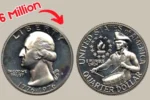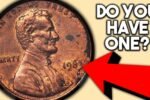5 Rare Bicentennial Quarters Worth Millions: Could You Have One?
Most people don’t think much about the change they carry in their pockets. Quarters are just everyday coins used to buy a soda or feed a parking meter. But what if one of those quarters was actually worth millions of dollars? It sounds hard to believe, but a few rare Bicentennial Quarters are worth far more than 25 cents — some have even been estimated to be worth hundreds of thousands or even millions.
These valuable coins are special versions of the Bicentennial Quarter, which was released in the mid-1970s to celebrate America’s 200th birthday. While millions were made and are still in circulation, a few rare types have unique features that make them highly sought-after by collectors.
In this article, we’ll look at five rare Bicentennial Quarters that could be hiding in your pocket, your old coin jar, or a family collection.
Attention Please: What Is the Bicentennial Quarter?
The Bicentennial Quarter was minted in 1975 and 1976 to celebrate 200 years of American independence. Instead of the usual eagle design on the back, these quarters have a special drummer boy with a torch and stars, representing the spirit of 1776.
All these coins are marked with the dual date 1776–1976, and they were made in very large numbers. However, a few versions were produced with special materials, errors, or low mint numbers, which made them incredibly rare.
These are the coins that collectors are paying top dollar for today.
Overview Table: 5 Rare Bicentennial Quarters Worth Millions
| Rank | Type of Quarter | Special Feature | Estimated Value |
|---|---|---|---|
| 1 | 1776–1976 Silver Proof Error | Struck on wrong planchet | $1.2 million+ |
| 2 | 1776–1976 No Mint Mark Error | Missing mint mark, rare variety | $850,000+ |
| 3 | 1776–1976 Double Die Obverse | Doubling on date and lettering | $500,000+ |
| 4 | 1776–1976 San Francisco Proof Coin | High-grade silver proof (deep cameo) | $300,000+ |
| 5 | 1776–1976 Off-Center Strike | Major misalignment of design | $250,000+ |
Details of Each Rare Quarter
Let’s take a closer look at each of these special quarters and what makes them so valuable.
1. Silver Proof Error Coin
Some Bicentennial quarters were made in 40% silver for collectors, not circulation. However, a few were accidentally struck on the wrong type of planchet or had striking issues. These errors are extremely rare, and one perfect example sold for over $1.2 million at a private auction.
2. No Mint Mark Error
Most quarters show a small mint mark (D, S, or P) near the date. A few, however, were released without a mint mark by mistake. This variety is incredibly hard to find, and some collectors are willing to pay up to $850,000 for one in great condition.
3. Double Die Obverse
This error occurs when the coin is struck twice slightly out of alignment, creating a noticeable doubling in the design — especially in the words “LIBERTY” or the date. These coins are highly valuable, with estimates reaching half a million dollars or more.
4. San Francisco Silver Proof (Deep Cameo)
The San Francisco Mint produced silver proof sets, but a small number of these quarters came out in deep cameo condition — meaning they have an especially sharp contrast and mirror-like background. These perfect-condition proofs can bring in $300,000 or more, especially when professionally graded.
5. Off-Center Strike
Some quarters were struck off-center, meaning the design is not properly aligned with the coin. While small errors are common, a large off-center strike on a Bicentennial quarter is extremely rare. If it’s dramatic and the date is still visible, the coin could be worth over $250,000.
How to Check If You Have One
You might be wondering if you have one of these rare coins already — or how to spot one. Here are some tips:
-
Check the Date – It must say 1776–1976.
-
Look for Errors – Anything unusual like double images, no mint mark, or off-center designs could be a sign.
-
Weigh the Coin – A regular copper-nickel quarter weighs about 5.67 grams. A silver one weighs more (around 5.75g+).
-
Inspect the Edge – If the edge looks silver all around with no copper stripe, it might be a silver version.
-
Condition Matters – Coins in mint or uncirculated condition are worth the most.
If your coin seems special, do not clean it. Cleaning a coin reduces its value. Instead, take it to a professional for appraisal.
FAQs
Q1: Are all Bicentennial Quarters worth money?
A: No. Most are common and only worth 25 cents. Only rare error coins or high-grade proofs can be worth a lot of money.
Q2: What makes a Bicentennial Quarter valuable?
A: Errors like double die, missing mint mark, silver planchets, or off-center strikes make certain coins rare and valuable.
Q3: Can I still find these rare quarters in circulation?
A: It’s unlikely, but not impossible. Some have been found in old coin jars, bank rolls, or change from stores.
Q4: What should I do if I think I found a rare one?
A: Don’t clean it. Take it to a coin dealer or get it professionally graded by services like PCGS or NGC.
Q5: Where can I sell a rare quarter?
A: You can sell through coin auctions, dealers, or online collector platforms. Make sure it’s authenticated first.
Final Thoughts
The idea of a quarter being worth millions may sound strange, but in the world of coin collecting, it’s a very real possibility. While most Bicentennial Quarters are only worth face value, a few rare ones — because of minting mistakes, silver content, or proof quality — have skyrocketed in value.
So next time you’re sorting through your spare change or cleaning out an old drawer, take a closer look at those quarters. You never know — one of them could be a rare treasure worth a fortune.



